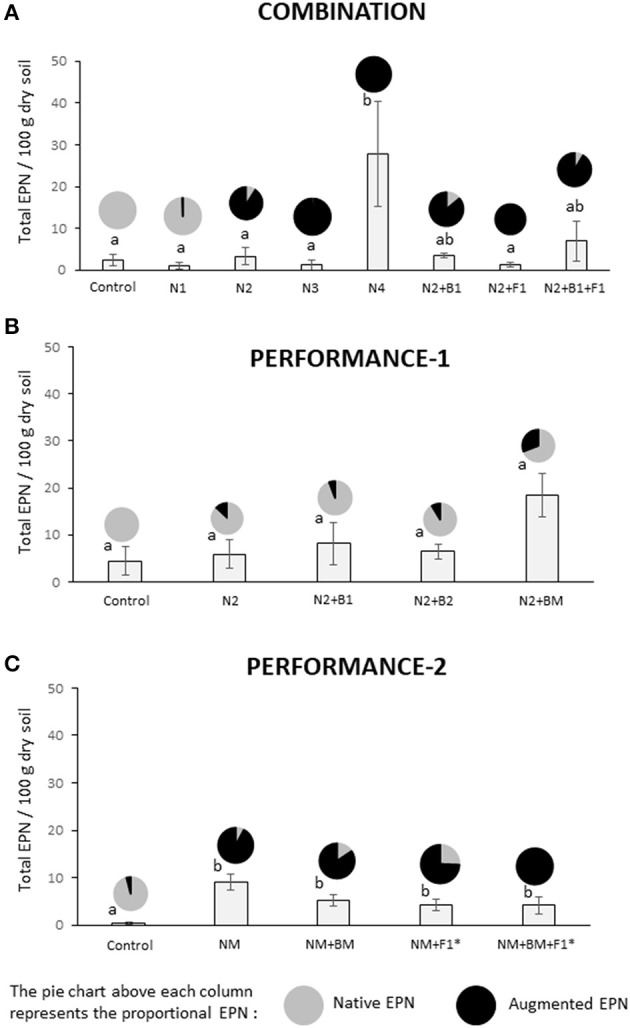Figure 3.

End of the season presence of inoculant and resident entomopathogenic nematodes in the COMBINATION (A), PERFORMANCE-1 (B), and PERFORMANCE-2 (C) field trials. Four different EPN species Heterorhabditis megidis (N1), Heterorhabditis bacteriphora (N2), Steinernema carpocapsae (N3), and Steinernema feltiae (N4) were inoculated individually or in combination with Pseudomonas protegens (B1), Pseudomonas chlororaphis (B2) and Rhizoglomus irregularis at two dosages (F1 and F1*). Mixtures of EPN (N1+N2+N4) or of the two bacteria (B1+B2) are indicated with NM and BM, respectively (for details see Figure S1). To determine the persistence of the EPN in soil of the different nematode inoculants as well as the impact of each treatment on the resident population of entompathogenic nematodes (EPN), a DNA extraction procedure followed by a qPCR approach was performed. Data are expressed as total EPN 100 g−1 of dry soil. Bar graphs report means (± SEM) and pie-charts show the proportion of native EPN vs. augmented EPN. Significant differences between treatments were calculated with one-way ANOVA (significance level P < 0.05) followed by the Tukey post-hoc test. Different letters indicate statistical significance at P < 0.05.
